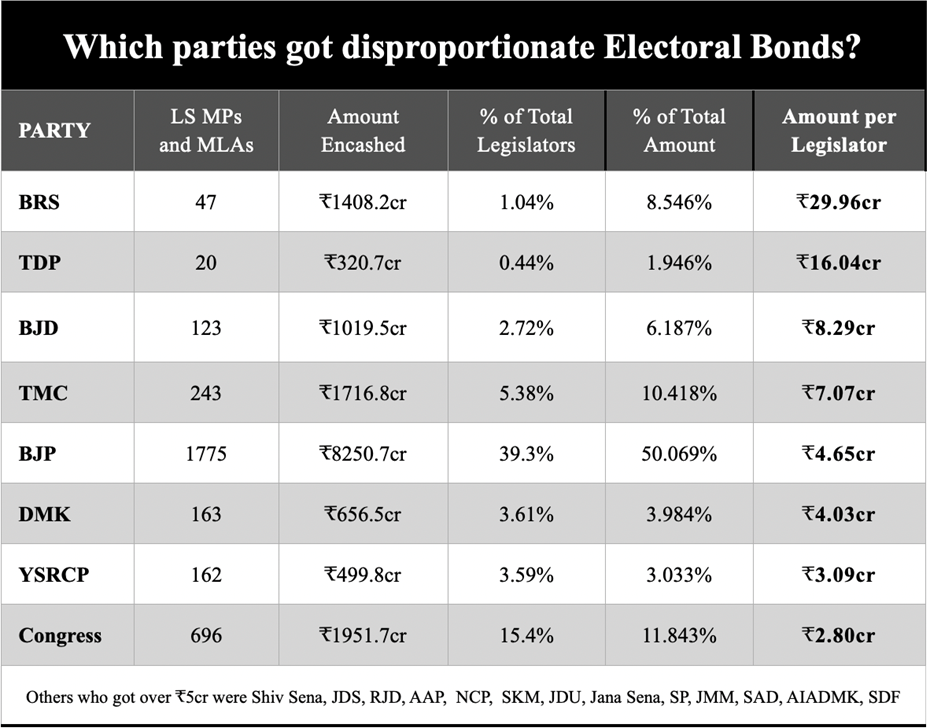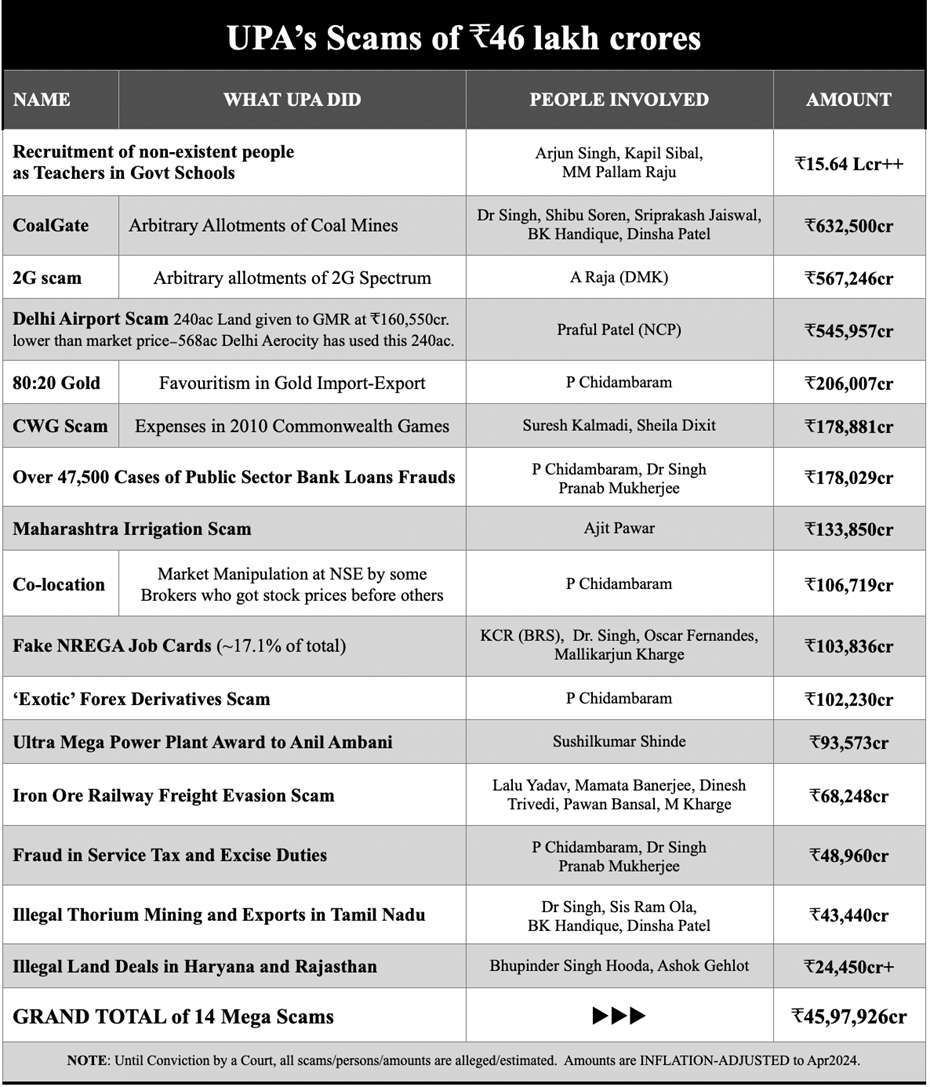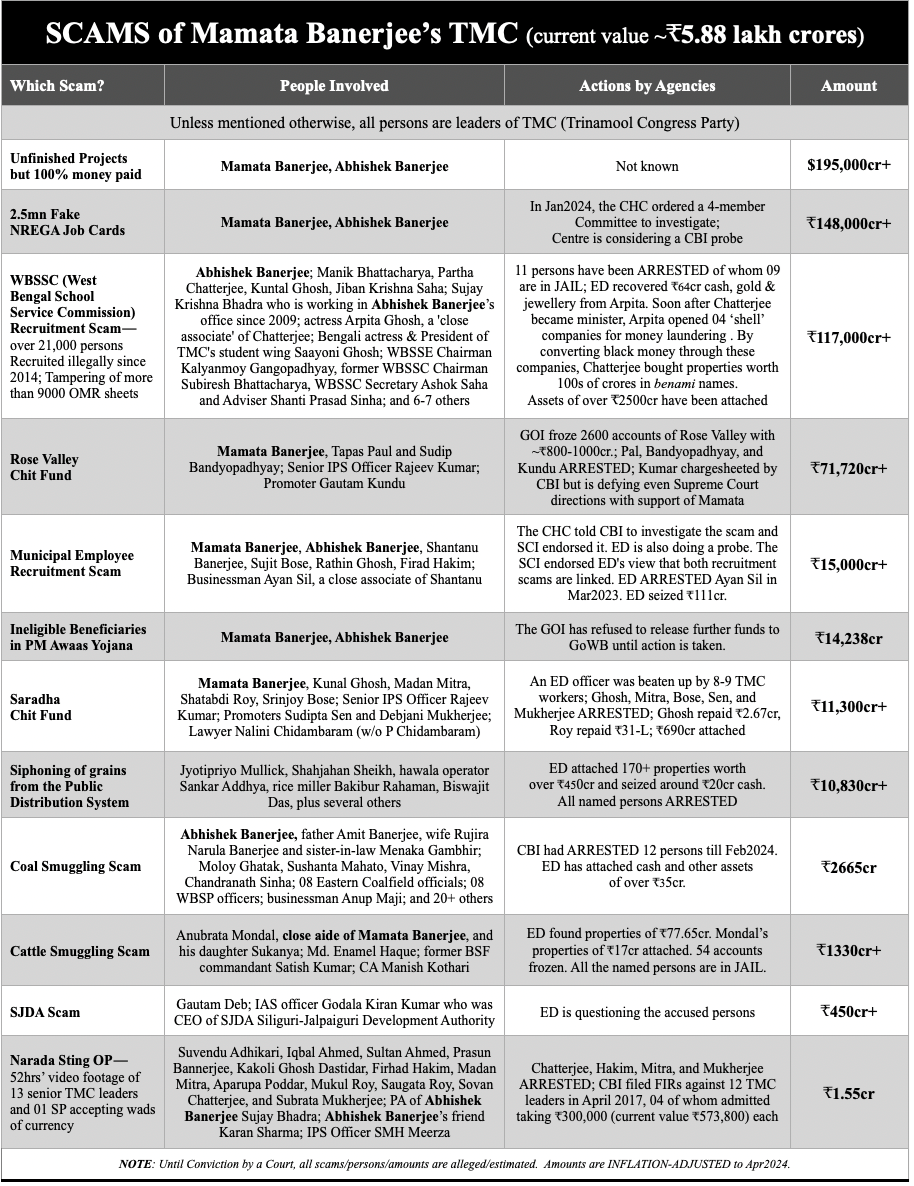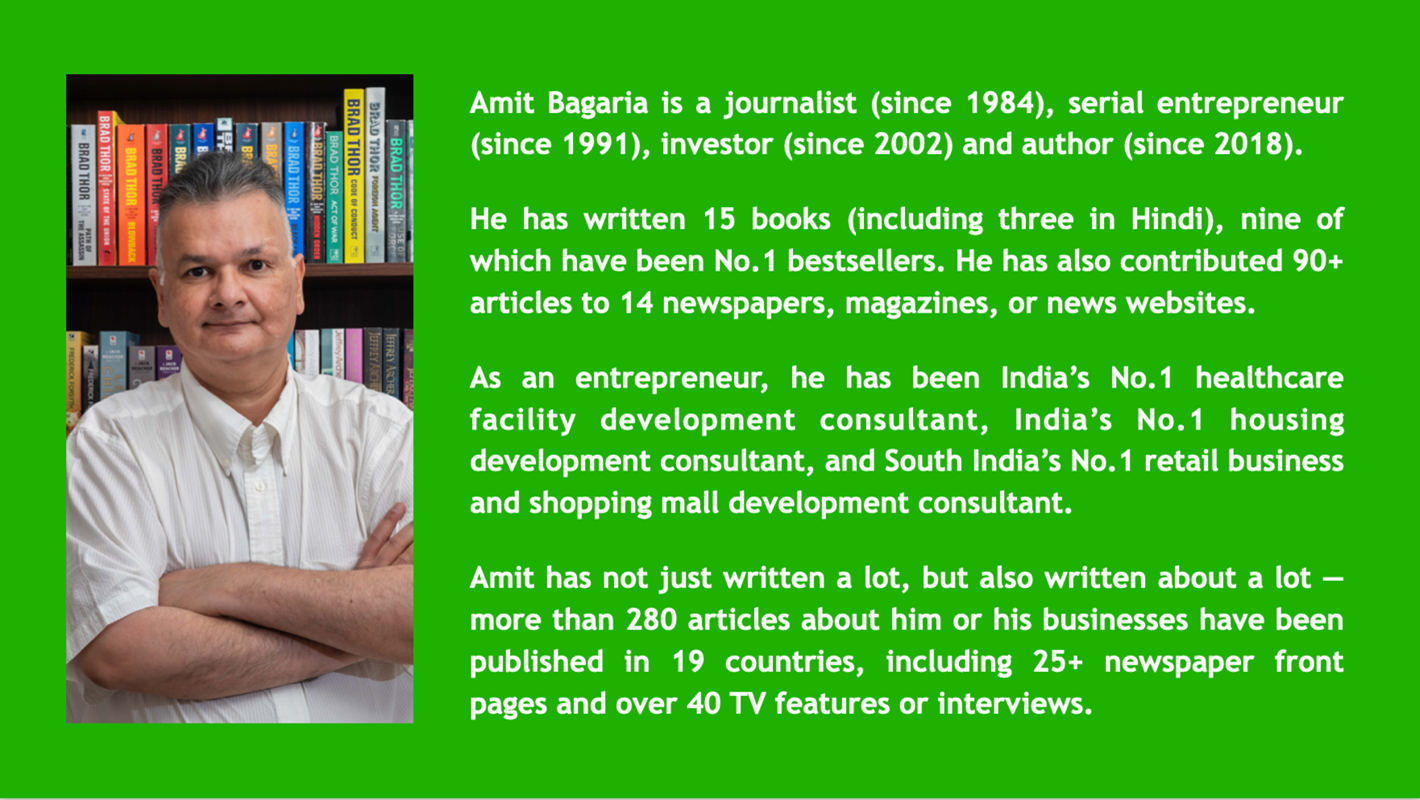Regardless of which country it is, political parties and candidates will always be funded by corporates and wealthy individuals. This has been happening since the year 1788 and will happen till the year 2788, until a better method can be found (and that is highly unlikely!).
The International Institute for Democracy and Electoral Assistance (“International IDEA”) database on political finance regulation was created in 2003 and has become the leading source of information on political finance regulation worldwide. Since 2011, the database provides up-to-date information on regulations used in 164 countries around the world.
Worldwide, the most common ban on political donations relates to government resources (excluding the provision of regulated public funding). A little over 57% of the countries (94 out of 164) ban such donations in order to counteract the abuse of state resources.
Bans on donations from foreign sources are also common: 68% of countries ban such donations to political parties, while 51% ban foreign donations to candidates.

In contrast,. less than 22% (only 36 out of 164 countries) ban corporate donations to political parties (28% in Asia and 23% each in Europe and the Americas). Around 42% of the countries in the Americas, 31% in Asia, and 23% in Europe ban corporate donations to individual candidates.
Globally, 74 countries do not limit the amount that can be donated to political parties or candidates. 116 countries have provisions for direct public funding to political parties, although the figure varies from 27% of countries in Oceania to 86% of European countries.
69% of all countries provide political parties with free or subsidised media access.
Only 49 countries limit the amount of money that political parties are allowed to spend, although 44% apply such limits to electoral candidates.
Globally, 143 countries require some form of financial reporting on the part of political parties or candidates. However, only 53% of countries require reporting from both parties and candidates, suggesting a potential loophole where funds can be channelled through stakeholders that do not need to submit such reports.
In the US, one method is donating to a candidate via a PAC (Political Action Committee). There are electoral trusts in most countries and legal political funding is often routed via such trusts.
Even India has electoral trusts—Prudent, Progressive, AB General, New Democratic, Samaj, Triumph, Janta Nirvachak, People’s Electoral Trust, and Janhit. However, very little money has come through these trusts in the last 30-35 years since they started emerging on the scene. Parties or candidates were getting 75-90% of their funding via cash (black money).
In Lok Sabha elections, the 543 contested seats (2 are nominated), around 900 candidates get funded by corporates. At an average corporate funding of ₹6 crores per candidate, the total comes to ₹5400 crores.
In State Assembly elections, around 6880 candidates get funded by corporates at an average of ₹1.75 crores per candidate, resulting in a total of ₹12,040 crores.
The total election funding by corporates is thus ₹17,440 crores every five years.
In the context of the size of India’s economy as well as the size of corporate India’s balance sheets, this is a very small amount. However, until the year 2018, the chronic problem was that more than 70-75% of the corporate funding was done in cash, and hundreds of companies that did not have cash had to generate it.
Therefore, the ELECTORAL BOND (“EB”) scheme introduced by Late Finance Minister Arun Jaitley on 2nd January 2018 was an answer to the malaise of election funding via black money. The scheme had already been discussed in both houses of Parliament.
When Jaitley announced that the donations via Electoral Bonds would remain anonymous, most political parties supported the “EB Scheme”, and therefore the scheme had been “approved by Parliament. Corporates were also happy with the anonymity.
Soon, corporates starting buying Electoral Bonds worth crores of rupees. Between March 2018 and January 2024, EBs of ₹16,478.6 crores were sold by the State Bank of India (“SBI”), the only bank authorised to sell these.
Buyers included the ‘who’s who’ among corporates, from Tatas to Birlas, from Adani to Ambani, from RP Sanjiv Goenka Group to Mahindra Group, from Vedanta to TVS—more than 60% of all Indian corporate groups with a net worth of ₹100 crores or more had bought Electoral Bonds.
The intention of Modi Government (and Prime Minister Modi personally) was to reduce the role of black money in election funding—as you know, Modi has always been against black money.
The corporates could even write-off the donations from their taxable income. It was a win-win situation for everybody.
Almost seven years after the Electoral Bonds Scheme had been approved by Parliament, on 15th February 2024, a few ‘wise’ men perched behind high benches in the Supreme Court of India (“SCI”) made a huge error of judgment and struck down the EB scheme as they deemed it ‘unconstitutional’.
The men who wear black coats and tower above ordinary human beings are allowed to make mistakes, as they are not Martians or Gods, but human beings like us. But how come it took those wise men seven long years to wake up and realise that the scheme is unconstitutional?
The SCI even asked the SBI to disclose the names of all donors, and to which political parties they had donated. Since the donations were supposed to be anonymous, and corporates believed the Modi Government’s word on this, it was completely unfair for the SCI to get the names disclosed. People will lose faith in Parliament and leaders elected by us.

Unelected people who wear black coats and sit behind high benches are not supreme. As per the Constitution, WE THE PEOPLE are supreme.
But unfortunately, in India, the judges select themselves through a laughable ‘Collegium’ system. A panel of judges headed by the CJI selects judges for the SCI and the High Courts. Under the collegium system, the GOI, including the PM, cannot reject the names selected by the collegium. This system has come under a lot of criticism. The Modi 1.0 government had got the National Judicial Appointments Commission Act (NJAC) passed in Parliament in August 2014.
The NJAC would consist of the CJI (as Chairperson), two SCI judges next in seniority to the CJI, the Law Minister, and two eminent persons to be appointed by a committee consisting of the CJI, the PM, and the Leader of Opposition in the Lok Sabha. The NJAC Act was ratified by 16 State legislatures and assented by President Pranab Mukherjee on 31st December 2014.
In October 2015, a Constitution Bench of the SCI, by a 4:1 majority, upheld the collegium system and struck down the NJAC as unconstitutional.
In the US, the President nominates judges to the US Supreme Court, who have to be approved by the US Senate (their Upper House).
In the UK, judges are selected by a Judicial Appointments Commission (JAC), and they have to be approved by the PM and the Lord Chancellor, who have the right to approve or reject the recommendations of the JAC. The Lord Chancellor is the minister responsible for the administration of the courts, legal aid, the prison system, and probation services in England and Wales. It is for the Lord Chancellor to recommend the appointment of judges to English, Welsh, and UK-wide courts of law and tribunals.
As of 1st December, 2023, as much as 29.1% of the 1114 sanctioned judge positions in India’s 25 High Courts were vacant. Similarly, in the district judiciary, out of the total sanctioned strength of 25,081 judges, as of April 2023, more than 21% of the posts were vacant.
Authors Harsh Gupta ‘Madhusudhan’ and Rajeev Mantri wrote in their book A New Idea of India: “Out of 33 names sent for appointment in 2018 by the Allahabad High Court Collegium, one-third were found to be related to sitting or retired judges. In 2016, the country’s largest high court faced a similar embarrassment when the then-CJI TS Thakur had to reject 11 out of 30 names. Consider the case of other chief justices. Dipak Misra is the son of a former CJI. TS Thakur himself is the son of a former J&K High Court judge. RM Lodha’s father was a Rajasthan High Court judge. His uncle was chief justice of the Rajasthan High Court. Another uncle was the chief justice of the Guwahati High Court. Ex-CJI Altamas Kabir’s sister was elevated to the Calcutta High Court when Justice Kabir was in the SCI. CJI SA Bobde was the son of an ex-attorney general of Maharashtra. DY Chandrachud, slated to serve as India’s CJI from 2022 to 2024, is the son of a former CJI. Justice UU Lalit, who is also a CJI-in-waiting, is the son of a former Delhi High Court judge. And it goes on. Outlook magazine reported that out of 28 sitting SCI judges, 11 had either judges or legal luminaries as relatives.”
This is the direct result of the collegium system. The NJAC must come back!!
And the names of SCI and HC judge candidates should be published for the public to raise objections within 15 days, and all objections should be investigated within 90 days. This will go a long way in ensuring we have ‘cleaner’ judges in our higher courts. People have lost faith in the judiciary and this is one way to restore that faith.

Did you know that the SCI has 130 days of holidays in a year? The Karnataka HC has 138 and the Bombay HC has 139 holidays. Why do judges work so little? Are the Milord’s kindergarten toddlers to get so many holidays?
All Indian judges should work on Saturdays and for longer hours from Monday to Friday until they clear the backlog of 50.72 million cases.
At 6.1026 million pending cases in High Courts (3.709 million of which are older than 03 years), it will take the 790 judges a minimum of 7823 hearings per judge to clear the backlog.
And at 44.473 million pending cases in District and Taluka Courts (19.615 million of which are older than 03 years) in District Courts, it will take the 19,781 judges 2247 hearings per judge.
How will the backlog get cleared without the judges taking substantially lesser holidays and also working overtime???
Instead of clearing this backlog, our ‘honourable’ judges waste time in deciding what the height of the ‘dahi handi’ should be during the Janmasthami festival, deciding how a private sports body like the Board of Control for Cricket in India should be run or checking if condom packaging was in contravention of obscenity laws.
In addition, we must bring back the ‘Jury System’, where a criminal case is judged by a panel of 8-12 jurors instead of one judge. It was abolished in 1959. Over 20 developed countries, including the US, the UK, Russia, and Japan, have such a system. There are four arguments in favour of a jury system: (1) There is no scope for corruption in a jury trial, as it is impossible to bribe 8-12 jurors; (2) Jury judgments will likely be fairer to all classes of people, as a jury normally comprises ‘peers’ of the accused; (3) Those who serve in a Jury will start understanding our laws a little better; and (4) Jurors will be time-bound to take decisions.
Coming back to EBS, the BJP says that it will bring back EBs (maybe via a Constitutional Amendment?). The prime minister himself has said in many media interviews over the past two months that he is open to suggestions on how to improve the scheme.
Here is the data that the SBI disclosed on recipients of EBs.

Total EBs of ₹16,478.6cr equal ₹3.65cr per legislator. BRS is 8.2 times the average and TDP 4.4 times, while BJP just 1.27 times.
When it came out, it opened a Pandora’s box.
“It is the world’s biggest corruption scandal and extortion racket, and the PM is doing it,” said Rahul baba. Congress president Mallikarjun Kharge said that BJP got half the donations while “the principal opposition party got only 11%.” He sought a SCI-led investigation into the “saga of corruption.”
Firstly, a party that got ₹1952cr cannot call others corrupt. Secondly, donors decide who gets what, not the ruling party. Thirdly, donors are smart and know that ‘Congress-mukt Bharat’ is very close. Fourthly, Congress is crying as it got the lowest share per legislator.
Other Opposition leaders also criticised the EB scheme and accused the BJP of being the most corrupt party on earth, and BJP’s EB collections to be the biggest corruption scandal. Mamata Banerjee was extremely aggressive in her accusation (as she usually is!) despite the fact that her party TMC got over 52% higher than the BJP per elected legislator. What a dichotomy!!!
Last but not the least, if BJP’s ₹8250.7cr is indeed a scam, how is it the world’s largest? The Congress-led UPA had at least 20 scams bigger than this, and even the TMC had 08 bigger scams. The amount that BJP got from EBs equals just 0.1794% of UPA’s scams and 1.403% of the TMC’s scams. See the Tables to understand.


There is a famous (or shall I say infamous) YouTuber named Dhruv Rathee who has done 03 videos about EBs, and in each one he shows the BJP as the villain, despite admitting that, except CPIM and CPI, all parties collected funds through this route. One of the videos, posted on 24th March, had 16,825,862 views as of 10:00am today.
Rathee has found 17.7 million gullible persons to subscribe to his YouTube channel, on which he has 570+ anti-Modi and anti-BJP videos.
It is because of professional actor-producers like Rathee and the arrogant cartoon Sanjay Jha who speaks absolute nonsense about Modi and the BJP every single day on TV debates—and gets mocked not only by other panellists but also the anchors, that the BJP will take up its tally from 303 seats in the 2019 Lok Sabha elections to 338-341 seats in this election (▲11.6-12.5%), and the NDA will win 381-386 seats compared with 354 in 2019 (▲7.6-9%); and the Congress tally will fall from 52 seats in 2019 to around 34-39 seats this time (▼25-34.6%).
THE ELECTORAL BONDS MUST COME BACK SO THAT BLACK MONEY IS REDUCED.
































